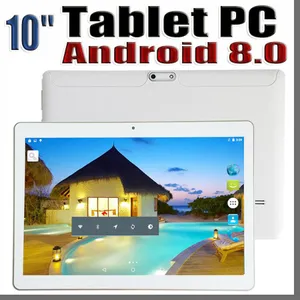Buying a TV is more complex than ever before. There are emerging innovations, formats, and buzzwords that you need to keep up with. Plus, pricing is also all over the place as more affordable companies are seeking to unseat brands like LG and Samsung.
Bad Sound: The Problem with Audio Modern TVs also stress the form factor over almost everything else. This is how we got ultra-thin bezels, thin OLED screens, and flush wall mounting. The side effect of this is that most TVs ship with subpar, down-fired speakers that can’t fill a room with good audio. There are exceptions: Sony OLEDs use the glass monitor as a kind of speaker, and certain TCL models have built-in sound bars. However, the majority—especially those on the end of the spectrum budget—are likely to be disappointing when it comes to tone. You may want to leave space in your budget for some audio hardware to enhance your experience. You don’t really have to break the bank on the Sonos Arc soundbar, unless you want a room-shaking, immersive experience with a tiny footprint on your entertainment unit. Soundbars are designed to offer better-than-TV audio at a price point that won’t make you wince. Many supports the latest standards, such as eARC and Dolby Atmos, but they are secondary to the primary function: to make up for the awfully integrated audio prevalent on TVs right now. Fancy Features: The Devil’s in the Details You might spend more money to have a TV that looks worse somehow. This is because TVs can vary very wildly in terms of additional features. To avoid wasting money on features you could never use, it’s worth taking the time to get acquainted with a few of them. The image processor on your TV can have a major impact on the quality of the image. A good image processor will take a gloomy 720p video and make it appear on a 4K monitor. A bad image processor, however could handle 24p film material very poorly and introduce a distracting judder or stutter. Cheap sets may have a poor performance in this area, but premium brands, like Sony, are doing well on their higher-end sets. Some brands go even further with features such as black frame insertion (BFI), which basically inserts black frames at set intervals to make motion smoother. This may be important to movie fans, but it’s not something you can give priority to if you just want a TV to watch the news. Connectivity is another field that may come at a premium. Most TVs have HDMI 2.0 ports, but the latest 2.1 standard is slowly rolling out. You don’t need HDMI 2.1 unless you want the maximum resolution and frame rate (120Hz) on your PS5, Xbox Series, or high-end PC. High-fresh monitor helps you to view content up to 120Hz—double that of other TVs on the market. However, unless the source (like a new console or graphics card) offers a picture of that standard, there is no need for a 120Hz monitor. Gaming features like Free Sync and G-Sync allow playing games a more enjoyable experience. They smooth out frame-rate drops, but most people don’t need them. If you do not realize that you need a feature because your hardware is compatible with it you can discount it and save some money. Both Sony and Microsoft’s new consoles are running HDMI VRR, so they don’t really need these features. One aspect that seems to have changed across the board on the new TVs is tech. While one you purchased ten years ago probably has a sluggish or clunky gui, new smart TVs also use modern operating systems such as Android TV, LG’s WebOS, Samsung’s Tizen, or TCL’s Roku. You may want to use the interface before you buy a TV just to make sure you like the OS you’re going to use for the next few years. On Resolution: Stick with 4K One aspect that seems to have changed across the board on the new TVs is tech. While one you purchased ten years ago probably has a sluggish or clunky gui, new smart TVs also use modern operating systems such as Android TV, LG’s WebOS, Samsung’s Tizen, or TCL’s Roku. You may want to use the interface before you buy a TV just to make sure you like the OS you’re going to use for the next few years. The jump from standard definition to HD was massive in terms of picture quality, but from HD to 4K, things are beginning to get a little murkier. You’ve got to be a certain distance from the TV to see the advantages of 4K, but there’s no denying that the picture is clearer and more accurate. Then there’s the issue of content. While the 8K monitor does a fine job of upscaling 4K content, finding native 8K content is nearly impossible at the moment. YouTube supports it, but there’s no way to filter the results of your quest. Some streaming platforms have not yet provided 4K video, and many cable broadcasts are still collapsing in standard definition. Netflix recommends a 25Mbps Internet speed for streaming 4K video, which is already highly compressed. This reasoning would need at least 50Mbps for 8K content, which would also use a lot more bandwidth than 4K. High Dynamic Range: The Future of Video The High Dynamic Range (HDR) represents a leap forward in display technology. The dynamic range is the visual spectrum between the darkest blacks and the brightest lights, and is usually measured in stops. While the conventional standard dynamic range (SDR) TV has a range of about six stops, the new HDR displays can exceed 20. This means that you get more details in the shadows and highlights that make the picture richer. HDR also incorporates a broader variety of colours and a much higher peak brightness. You’ll see more colour shades that result in less “banding” or grouping similar colours together. You’ll also see brightness bursts from things like the sun, providing a more realistic presentation. HDR is a big deal, as most recent movies and TV content take advantage of it. Next-generation game consoles (such as Xbox Series X and S, and PlayStation 5) also put a strong focus on HDR, although it has been used by the last-generation systems for years. If you watch a lot of movies or play games, you’re going to want strong HDR help. First it helps understand the differences between the major HDR formats. Below are some of the most critical features to remember; · HDR10: This is a simple regular HDR. Almost every TV on the market is promoting it. If you buy a movie with a “High Dynamic Range” sticker on the package, it almost definitely contains support from HDR10. · Dolby Vision: a superior HDR implementation, uses dynamic metadata to help TV create the most accurate frame-by-frame HDR image. · HDR10+: Open evolution of HDR10, including dynamic metadata. This format is usually used on Samsung TVs. · Hybrid Log-Gamma (HLG): This is an HDR broadcast implementation that enables both SDR and HDR displays to use the same source. Additional data is given for HDR-enabled displays, so that they obtain a better image. With the exception of HDR10 (the default HDR implementation), Dolby Vision has much stronger support than HDR10+. Streaming platforms, including Netflix, use it for almost all new content, and Microsoft has also committed to bringing Dolby Vision to Xbox Series X and S gaming in 2021. RINGS is one of the best tools to buy a TV. A broad test criterion is used on all the TVs examined, which offers an objective analysis of strengths and weaknesses. Only add your results to your situation, living room, and viewing habits. There isn’t a single great TV for everybody. Only be sure to avoid the normal mistakes that people make while buying a TV.
If you’re looking for a gaming-specific TV, different features are more relevant. We’re breaking down what you need to know to make the smartest buy!
- Ad -
Selecting the display: OLED, QLED, and more
Most TVs on the market are LCD panels with LED backlight. These include the cheapest new TVs, from brands like TCL and Hisense, all the way to LG’s Nano Cell range and Samsung’s top-of-the-line QLED packages.
- Ad-
However not all LED-lit panels are equal. Panels advertised as QLEDs use a Quantum Dot layer that increases the range and vibrancy of the colours on the show. Of all the LCD panels on the market, the QLEDs are as strong as they are.
The only downside on panels that use conventional LED lights is that they are backlit. This means that in order to show an image, a bright LED must shine through the many layers that make up the panel. This can result in poor black reproduction and possible light bleeding around the edge of the show.
- Ad -
The new and best) LED models use full array local dimming (FALD) to dim select areas of the screen and boost black reproduction. This allows the LCD panels to get far closer to the true” black. Since the dimming zones can be very wide, the technology is not perfect. This phase also creates a halo effect around the edges of the dimming areas.
OLED is a technology entirely different from QLED. These panels are self-emissive, which means that each pixel generates its own light. There is no LCD video, and no backlight shines through the “stack of layers that make up the show. Really the OLED stack is extremely small.
This means that OLED screens have “perfect blacks so they can absolutely turn off the pixels. The effect is a striking picture with a very strong contrast. On the other hand, OLED displays can suffer from poor near-black results. Some models are susceptible to “black crushing” in which dark shadow details are lost.
OLEDs are also vulnerable to burning under certain conditions.
OLED technology can also be a little more costly than conventional LED-lit displays because it is a newer technology with higher production costs. With this in mind, LG’s flagship displays, such as C9 and CX, typically fall within the same range as Samsung’s flagship QLED displays.
But there is also the outlier: the mini-LED. These panels also use conventional LCD technology with smaller LEDs. This means that they will pack up in a lot more dimming areas. The impact is a much less pronounced halo effect and the same rich, inky blacks you might see on the OLED.
Although MiniLED TVs provide a great balance between price and image quality, they are thin on the ground at the moment. TCL is currently the only company to sell Mini-LED models on the U.S. market, but more are expected to arrive from Samsung and others in the near future.
Brightness and Viewing Angles
A QLED package could be twice as bright as an OLED, making it ideal for viewing in a very bright space. Conversely, if you like watching movies in the dark or mostly at night, the higher black OLED levels will give you a better picture. If you hate blacks, OLED is the way to go.
OLED screens also have outstanding viewing angles, making them suitable for group viewing. Although some colour-shifting can occur when viewing off-axis the picture will not dim noticeably, even at extreme angles. This makes the OLED a great choice if not everyone in the room is directly facing the screen.
In an attempt to get around this, various LCD models use different coatings and panel styles. For e.g., LG’s Nano Cells use IPS panels with excellent viewing angles, but poor contrast ratios.
On the other hand, VA screens, like those in Samsung’s QLEDs, suffer from poor off-axis viewing angles, but have the highest contrast and colour reproduction ratios.
If you have a big family or enjoy watching friends watch sports or movies, make sure you understand the viewing angles and the ambient light in the room before choosing a TV.
You may want to leave space in your budget for some audio hardware to enhance your experience. You don’t really have to break the bank on the Sonos Arc soundbar, unless you want a room-shaking, immersive experience with a tiny footprint on your entertainment unit.
- Ad -




